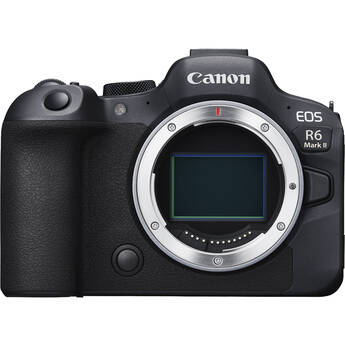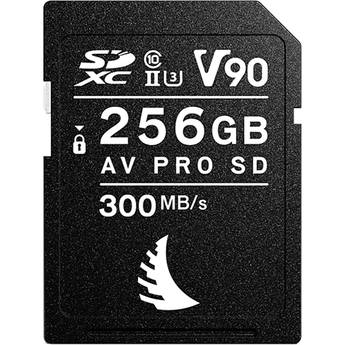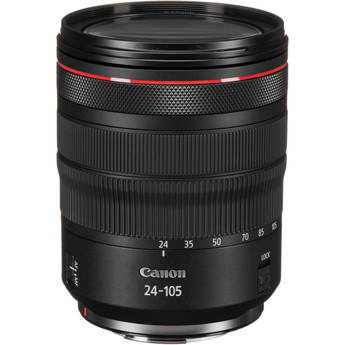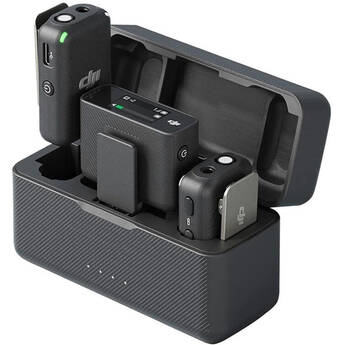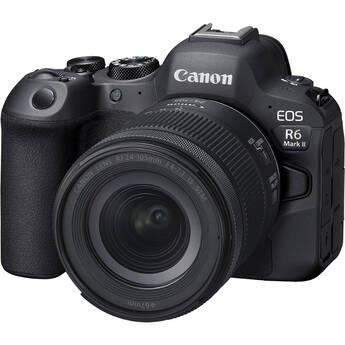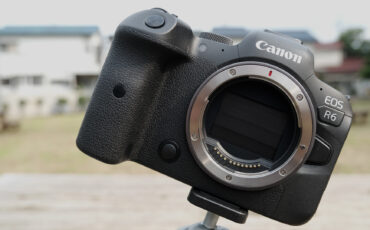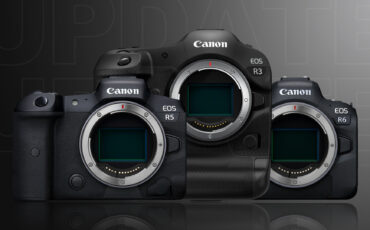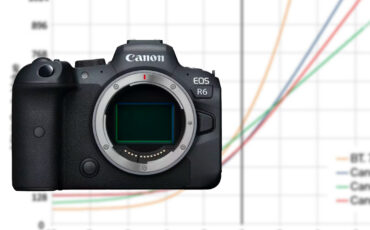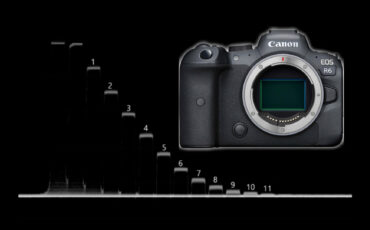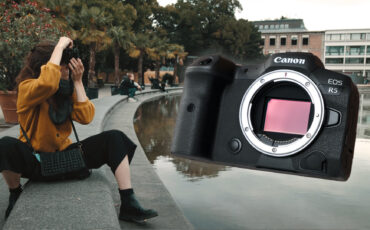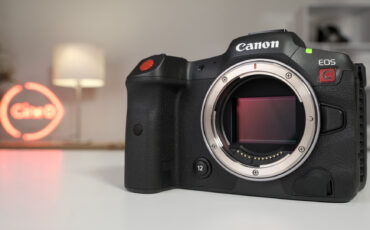Canon EOS R6 Mark II Review – First Look and Mini Documentary
Restriction-free music courtesy of Epidemic Sound. Sign up here: Epidemic
Canon has just announced their new Full-Frame mirrorless camera, the EOS R6 Mark II and we were lucky enough to get a pre-production sample unit but with a “small” caveat. We literally had the camera for only two days, while one day was a national holiday, so practically, there was a single day to run and work with it, “secure an opinion” and report back to you guys by sharing my initial findings. So, sit back and make yourself comfortable. Here is my first look at the EOS R6 Mark II.
Just over two years ago, I found myself in an awkward situation. Canon sent me the EOS R6 camera to review and the result was underwhelming, primarily because of my frustration regarding how the camera behaved in the field. Camera overheating and long recovery times were the main issues back then, and although the original EOS R6 got better with time by having constant firmware updates, I was truly happy when Canon offered me to review the new upcoming EOS R6 Mark II. In a way, it felt like “closing a circle” and having a chance to “make peace” with Canon’s mid-level full-frame camera.
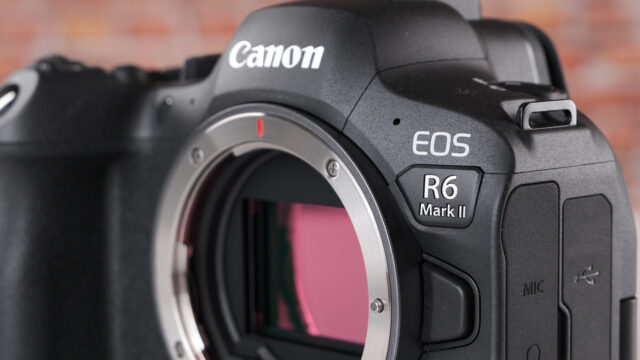
Although I do believe that I have enough experience to see where things are heading with this camera, this is really a “first look, hands-on review”. If you are into a comprehensive camera review, please look elsewhere. Oh, and regardless of having the camera for a very short amount of time, since it is a pre-production model, we did not conduct our lab test on it. Hopefully, we will have the opportunity to do so soon when we get our hands on the final product. Also, in case you missed it, you can read up on the original Canon EOS R6 lab test.

Before continuing with my review, I would like to thank three young ladies who jumped on the wheel and helped me execute a filming day on extremely short notice. Ina, Babsi, and Flora are all dedicated mothers who are busy raising their kids next to developing a career and being there for their partners when needed. They know each other since school time and destiny brought them to work together by establishing a “mom’s retreat program“, where busy mothers can reconnect with themselves, “feel woman-ly again”, and learn from each other’s experiences. I encourage you guys to watch the short mini-documentary above. Who knows, maybe this is exactly the present you always wanted to give your wife for the holiday season… :)
Canon R5 C Ultimate Video Manual
Canon EOS R6 Mark II – Overview
If you take a look at Canon’s current Full-Frame mirrorless cameras product tree, you will find the aging EOS R followed by the EOS RP at the bottom. (Announced in 2018 and 2019 respectively). Actually, when thinking about it, it was just over four years ago when I tested Canon’s first full-frame mirrorless camera the EOS R in India while filming an Indian wedding. (What a memorable experience it was!) Now, looking at the top of this product tree, one will find the EOS 5R C, EOS R5, and EOS R3 (My personal favorite). Those cameras made a big splash when first introduced, each one for different reasons… In between those products’ edges, we are being left with heartwood which theoretically should act as a backbone to Canon’s mirrorless product and this is where the EOS R6 Mark II resides. For complete transparency, besides my initial EOS R6 review, for filming, I don’t know how much better or more reliable the camera got with time as it went through several circles of firmware updates. On the other hand, from the short time that I spent with the EOS R6 Mark II, it looks like a mature and refined product. Please don’t get me wrong, of course, there are some concerns, but show me a perfect camera and I’m in.
So what should one expect when dealing with the new EOS R6 Mark II? Maybe the most obvious thing to me was, “continues work”, meaning, the camera DID NOT overheat on me throughout the day of filming, yet, the longest sequence I took was the indoor interview for about 30 minutes, and, lots and lots of outdoor short clips in a beautiful 20 degrees celsius/68 Fahrenheit weather. So in a way, the camera did not really have a “reason to overheat”, but this is what I thought when working with the original EOS R6 two years ago…
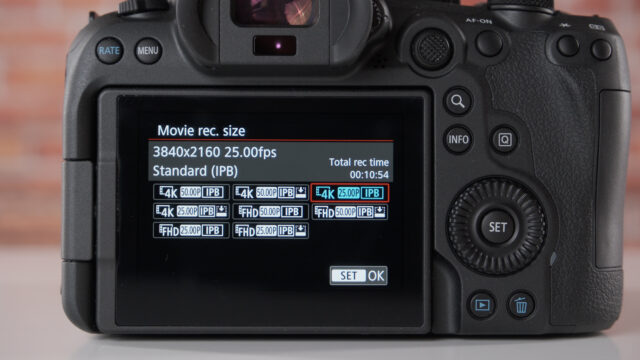
The other thing to take into account is what the camera can and cannot do. If you are into crazy high video resolution or top bit rates, internal RAW recording, or robust codecs like ProRes, then look elsewhere. This camera is all about “modesty”. 4K “only”, IPB compression (next to IPB Light), H.265 and H.264 MP4 containers (depending on if using Canon Log 3 and HDR or not), up to 120fps in full HD only, two SD cards slots to fit the overall video recording performance and that’s it.
I’ll let you guys decide if it’s good or bad, but the bottom line is: the specifications and more importantly, the material coming out of this new camera seems to be good enough for so many filming scenarios, especially if you are a journalist who is dealing with photos and videos for a living and need the “fast turn over” to complete the job. (4K/25p IBP H.265 played flows on my aging MacBook Pro EVEN when using Adobe Premiere’s latest edition…)
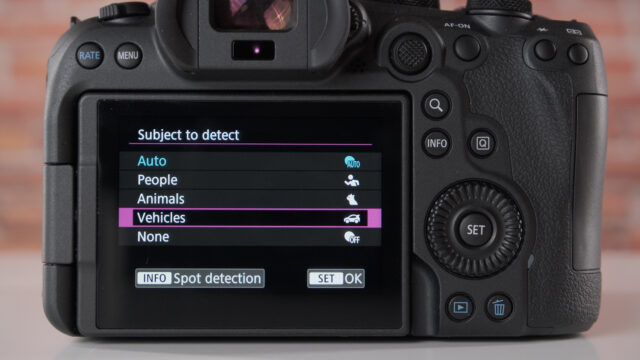
Canon EOS R6 mark II – What’s new?
If you’ve managed to read this review so far, you might ask yourself “what’s new”? Well, there are a few things to mention in this section. Let’s start to count them down, in no particular order:
- A new 24mp sensor
- Improved AF system can now detect and track racing cars and motorbikes, aircraft and trains. Also, additional animals like horses can be detected. (Yes, also zebras.)
- 6K Full-frame (no crop) RAW external recording (6.000 x 3.374) to Atomos Ninja V+, recorded as ProRes RAW. (Frame rates: 23.98, 25.00, 29.97, 50.00, 59.94 fps)
- 3.7K (cropped) RAW external recording (3.744 x 2106) to Atomos Ninja V+, recorded as ProRes RAW (Frame rates: 23.98, 25.00, 29.97, 50.00, 59.94 fps)
- 6K Oversampling to internal 4K UHD
- NO 30 minutes recording limits restrictions in most world territories. (if I’m not mistaken, cameras sent to the Indian market are still restricted)
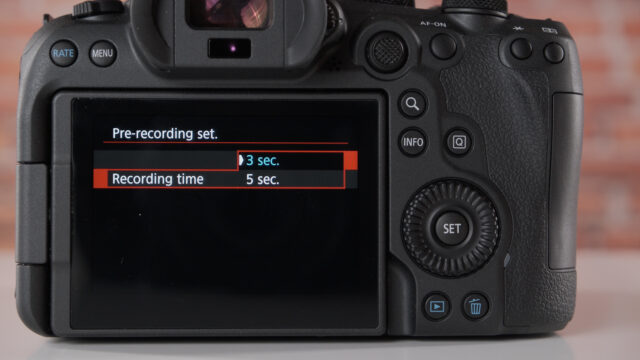
- Pre-recording (3 or 5 seconds to choose from)
- C-Log 3 only. (C-Log was removed from this camera for the benefit of having a greater dynamic range when using C-Log 3)
- Multi-function shoe. (Now it is possible to connect an external audio device as the Tascam CA-XLR2d microphone adapted.)
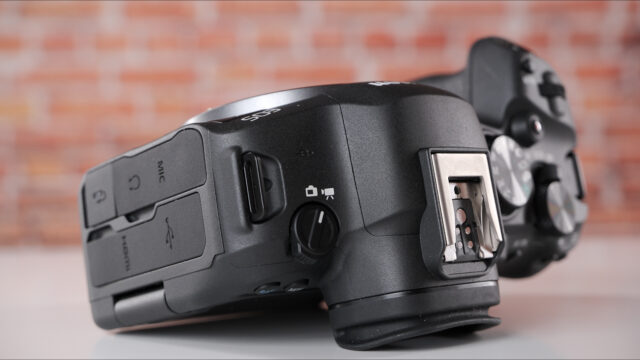
- False color exposure indicator. This is actually very big news. If my memory still functions well, this is the first mirrorless camera to support such a feature!
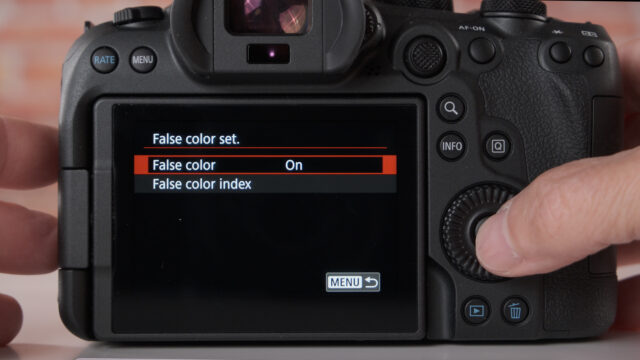
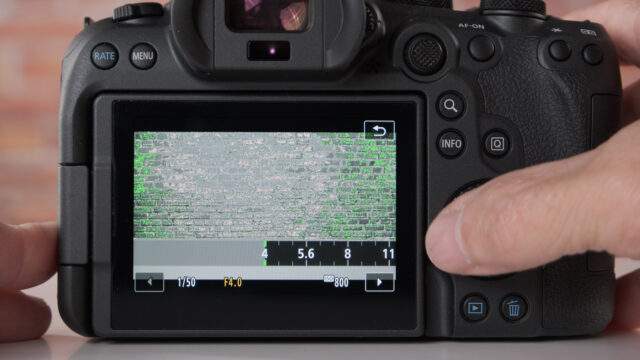
- Photo/Video button selector and a separate On/Lock/Off button (more below)
- According to Canon, the camera In Body Image Stabilisation (IBIS) has been improved but more on that later
Notes:
- When filming in CLOG3 and using the “video view Assist” function, False color can not be activated.
- When filming in a high frame rate (Full HD), and then disabling this option in the menu, the camera will not go back to its previous recording position (4K for example). Make sure to double-check this before continuing recording.
What still needs attention
Whenever possible I prefer NOT to use an external recorder, certainly when conducting a camera review when the idea is to judge how the “basic” video quality is. Nevertheless, if you are an Atomos user, pay attention that this camera has an HDMI Micro connector (like its predecessor).
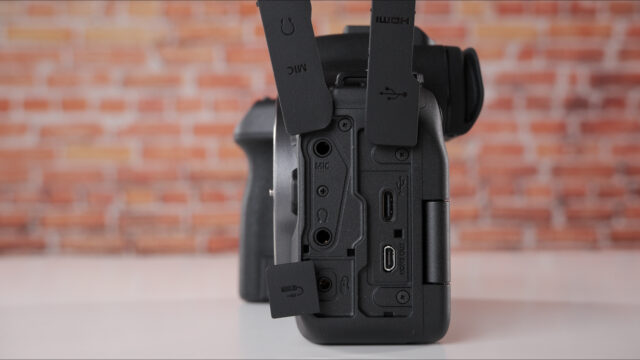
Now, I promised to mention the camera’s IBIS functionality in a bit more detail. The above video was shot entirely handheld, except for the interview with Babsi. While it functioned well most of the time during recording when watching the footage I came across some “wobbly” clips. I have to remind myself and you guys that I was working with a pre-production model so hopefully, this phenomenon can be carefully watched by Canon engineers and be fine-tuned accordingly if possible.
Autofocus works most of the time well although. I was expecting to see a higher accuracy in some of the filming situations.
We did not run our lab test on this camera (pre-production model), but from looking at the footage, I suspect that the rolling shutter results won’t be that good. On the other hand, it looks as if the camera’s dynamic range is adequate. I could tell while filming in some extreme light situations.
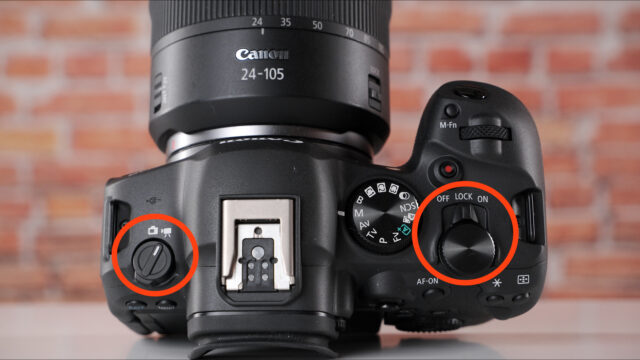
Last but not least, the function new OFF/Lock/ON button (in this particular order), drove me crazy all day. I’m not sure what the reason was for Canon to “brake” the boring routine of having an On/Off button, but this new arrangement didn’t work for me at all. I mean, it’s okay to add functionality to that knob sector, but why “in-between”? In other words, during filming, I more than not found myself in “Lock” mode instead of “ON”. This may seem like a small thing, but when you need to change something fast and the camera cries “locked”, it takes you a second to understand “what is going on”.
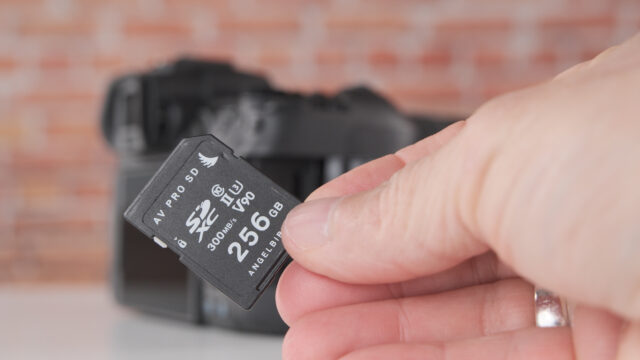
Conclusion
Leaving specs aside, the Canon colors and overall esthetics are simply gorgeous. Canon is proving again that the image coming out from a “low specs” camera (when compared to its own high-end mirrorless cameras and others from different manufacturers, too) can still look excellent! Top this with a really good internal audio recording quality and the possibility to connect an external XLR device and here you have a good camera for journalists and pro content creators. By the Way, there is an “Auto All” video function in this camera for photographers, who are not familiar with the ins and outs of taking videos.
So here you have it, the new Canon backbone camera. The one that should serve as a “good enough” for anything, be it taking photos or videos. I’ll let others come up with their photo verdict, but as far as taking videos is concerned, Canon did a good job of balancing between functionality and ease of use. When it comes to pricing, well, this camera will be rather expensive in Europe when compared to the price in the US, but there’s very little we as customers can do about it.
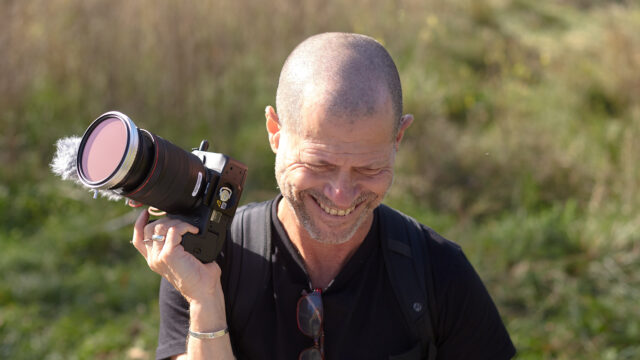
Production notes
Filmed with Canon EOS R6, 4K/25p, C-Log 3. Canon original LUT applied
Lens: Canon 24-105mm f.4 RF lens
SD card media: Angelbird AV PRO 256GB
External microphone for run & Gun: Rode Video Mic GO II
Audio for the interview: DJI wireless microphone system
Lens filter system: NiSi Swift True Color VND and Black Promist Kit
Light: Cineroid FL400S
Edited on Adobe Premiere’s latest edition
Guys, what do you think? Are these improvements over the original EOS R6 enough for you to consider buying this camera or were you expecting something else? Let us know in the comment section down below!
